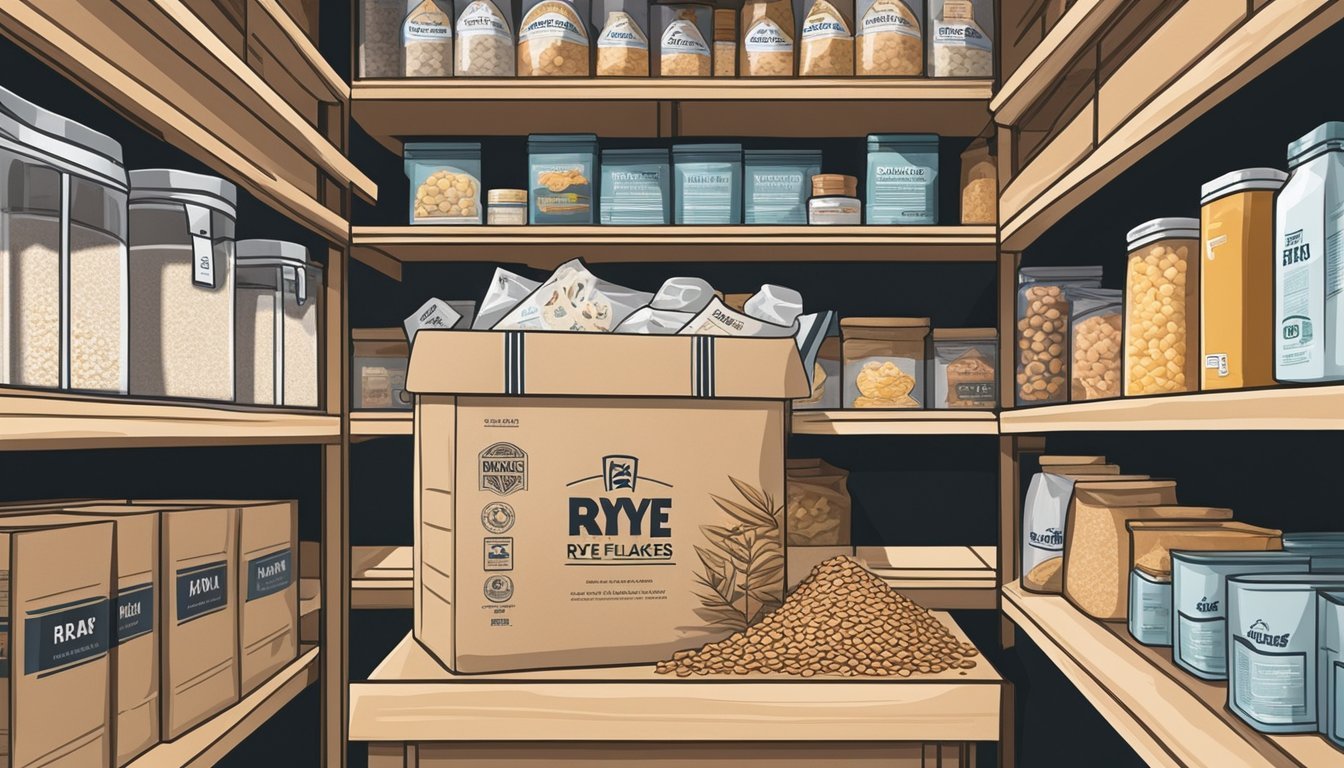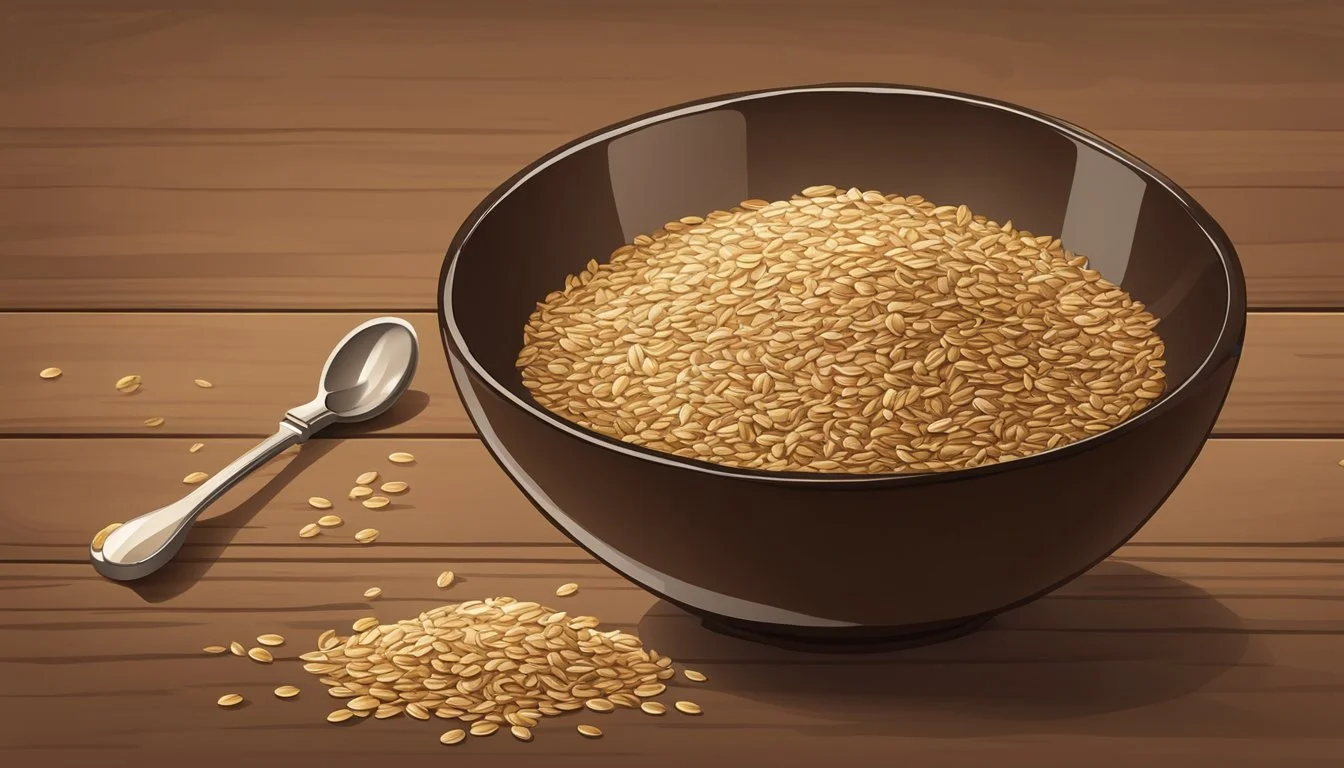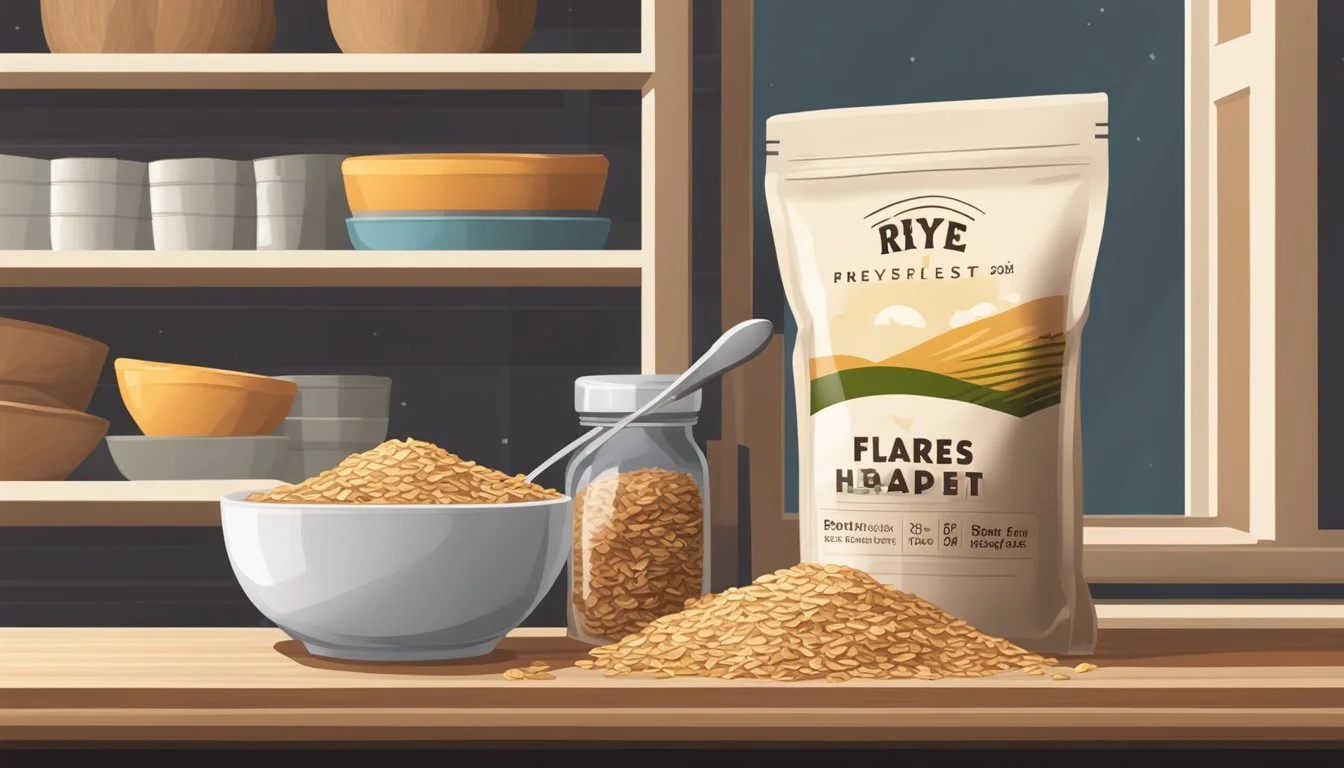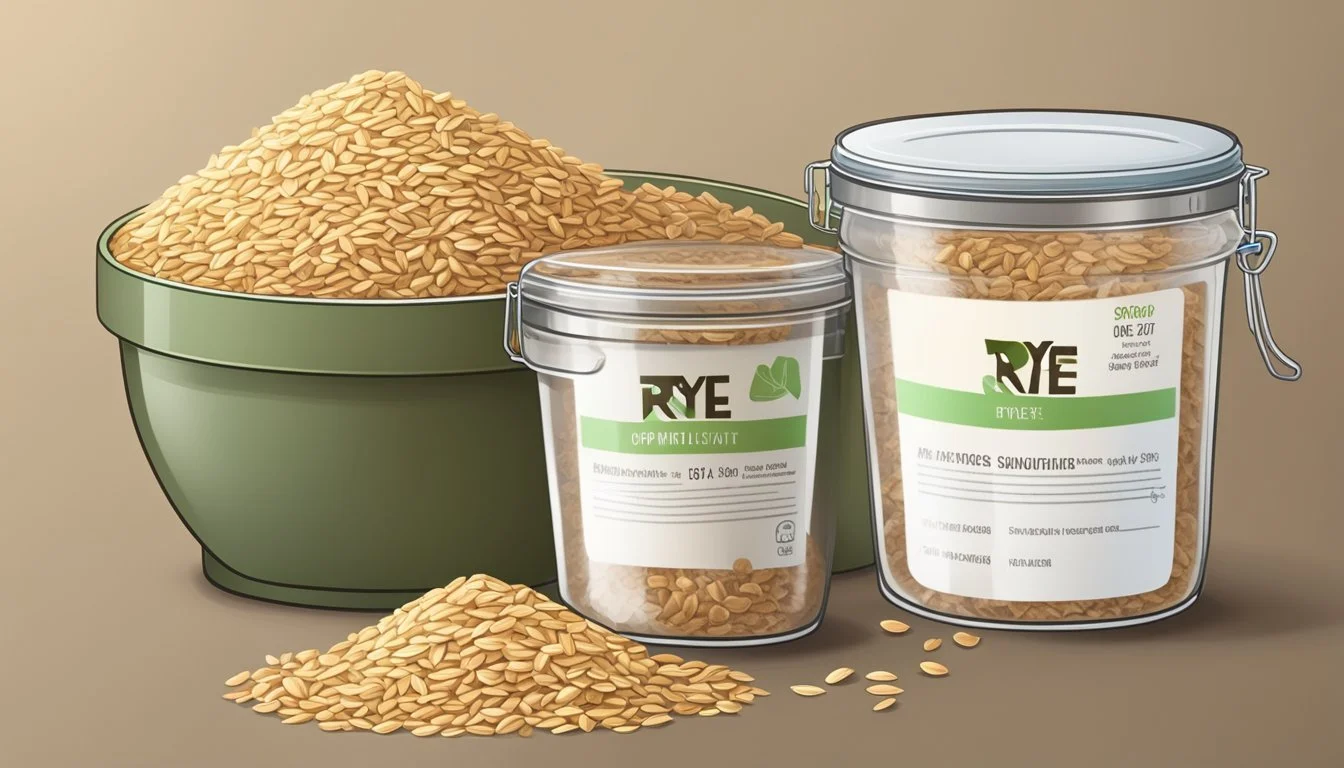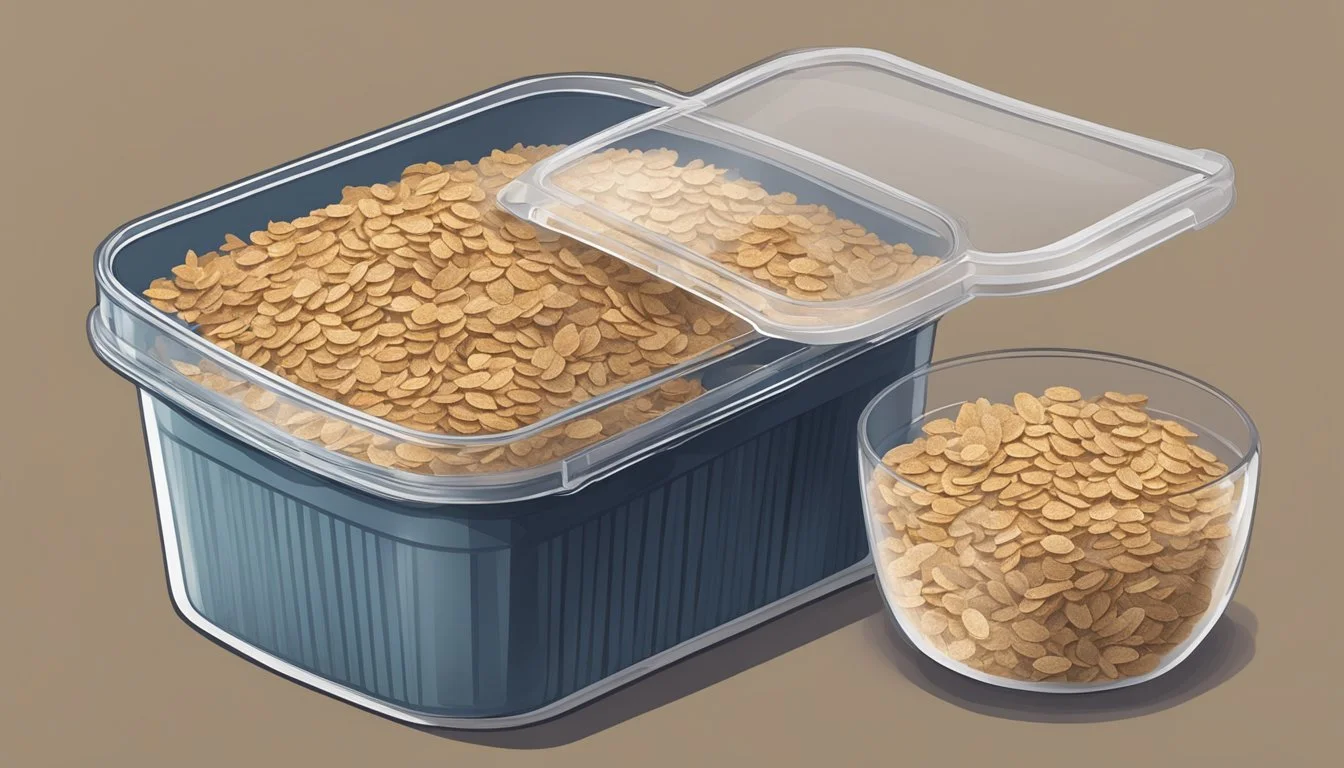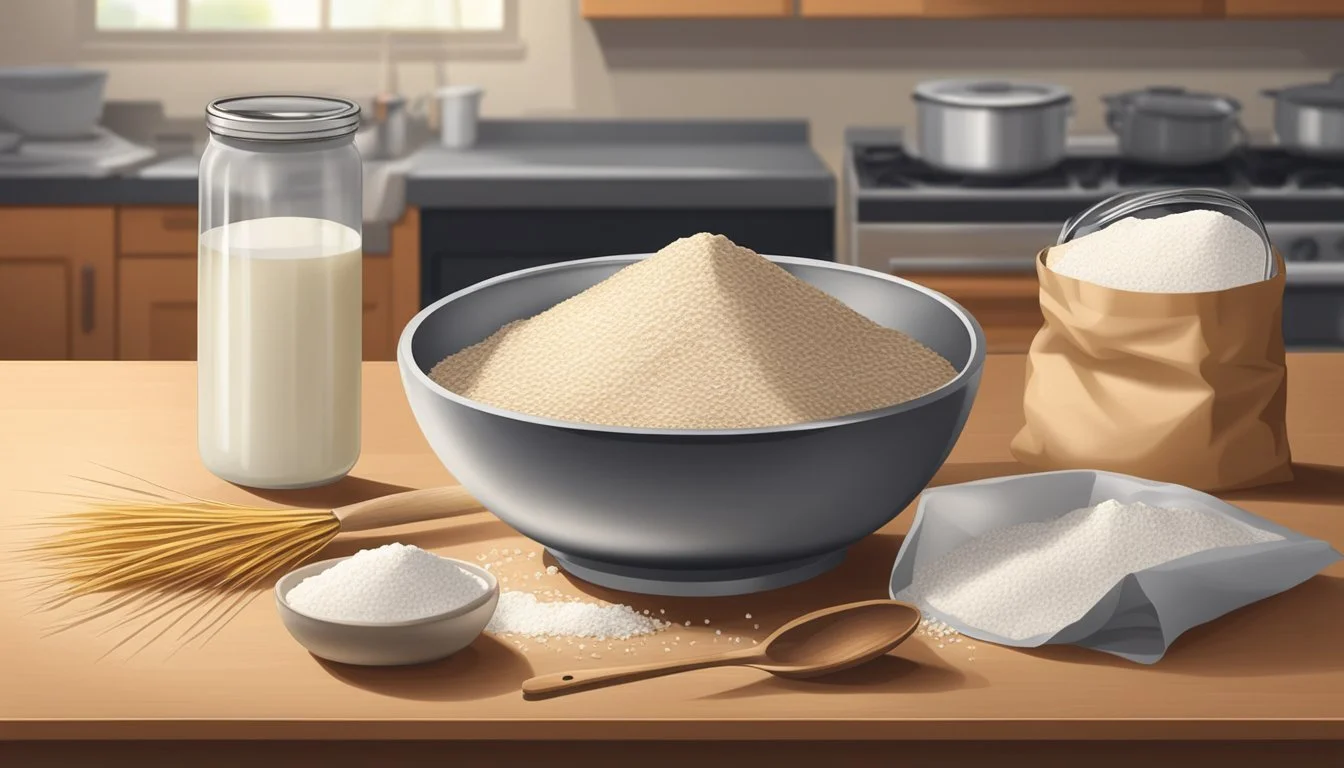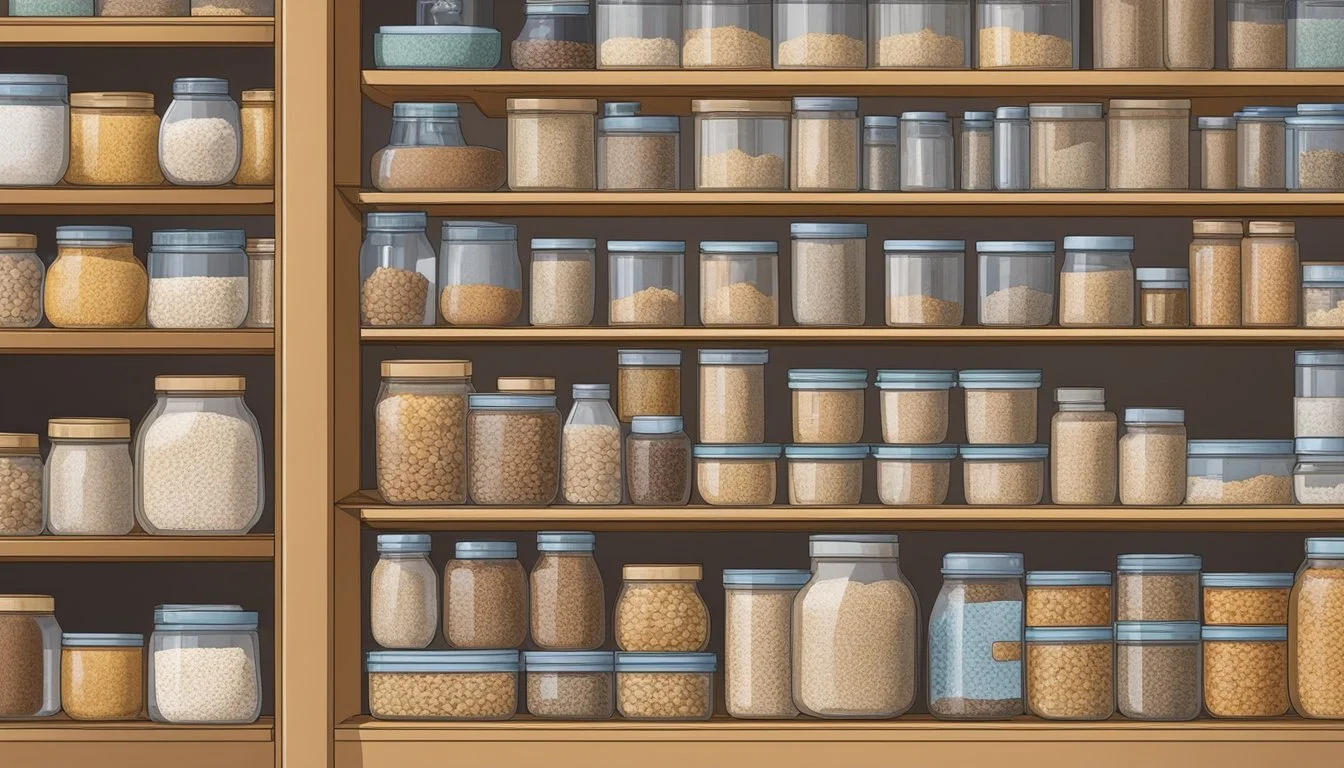How Long Do Rye Flakes Last?
Shelf Life and Storage Tips
When it comes to storing rye flakes, understanding their shelf life is crucial for maintaining both their nutritional value and flavor. Rye flakes, a whole grain product derived from rye groats that have been cut, cooked, and rolled, offer a nutritious addition to a variety of meals. They can be enjoyed in breakfast porridges, added to baked goods, or used as an ingredient in savory dishes. Like many whole grains, the lifespan of rye flakes largely depends on the conditions in which they are stored.
Under optimal storage conditions, which include a cool, dry, and dark place, rye flakes can remain fresh for about 6 months. However, they can last longer, sometimes over a year, if stored properly. A telltale sign that rye flakes have gone bad is the presence of a rancid smell upon opening the bag. The freshness and quality of rye flakes are best preserved when they are stored in an airtight container in the freezer, extending their usability up to and possibly beyond the six-month mark.
The storage environment plays a pivotal role in preventing spoilage and ensuring that rye flakes retain their wholesome qualities. Given their benefits and versatility, ensuring proper storage can help consumers maximize the use of rye flakes and avoid unnecessary waste.
Rye Flakes Overview
Rye flakes are a versatile grain with a nutritional profile offering various health benefits. Understanding their composition helps in appreciating their role in a balanced diet.
What Are Rye Flakes
Rye flakes are made from rye groats that have been cut, cooked, and rolled. They retain most of the nutritional content of the whole rye grain. These flakes are typically used as a cereal or ingredient in baked goods, offering a distinct flavor and a variety of culinary applications.
Nutritional Profile
Rye flakes are a nutritious choice among whole grains. They have a richness in:
Fiber: Aids in digestion and can assist in managing blood sugar levels.
Protein: Essential for muscle repair and growth.
Vitamins: B vitamins, which are vital for energy metabolism.
Minerals: Including iron, phosphorus, magnesium, and zinc.
Nutrient Benefit Fiber Supports digestive health and may help in controlling blood sugar levels Protein Contributes to muscle health and repair Iron Necessary for oxygen transport in blood Phosphorus Important for bone health B Vitamins Aid in energy production in the body Magnesium Supports muscle and nerve function Zinc Crucial for immune system function
These nutrients contribute to rye flakes’ position as a hearty choice in a well-rounded diet.
Culinary Uses
Rye, with its distinctive taste and nutritional profile, is a versatile grain that can be easily incorporated into a range of recipes. Its adaptability makes it an excellent choice for both sweet and savory dishes.
Rye in Recipes
Rye berries and flakes are a superb addition to savory dishes, enhancing the texture and flavor profile of soups and salads. They can cook down to a softer texture, making them an ideal ingredient to enrich stews and casseroles. In Scandinavian cuisine, rye is often used as a base for traditional dishes, reflecting the grain's hearty and robust character.
Cooking Techniques
When working with rye, it's essential to understand the cooking technique that best suits the form of rye being used. For whole rye berries, a basic stovetop method involves rinsing the grains and simmering them for approximately 45-60 minutes or until tender. Rye flakes, on the other hand, have a quicker cooking time, perfect for creating a wholesome porridge or adding to muesli and granola.
Rye Flakes in Baking
In baking, rye flakes contribute a nutty flavor and are a healthy inclusion in bread dough, particularly famous in pumpernickel and dark rye breads. They also add texture and richness to pastries and cookies, offering an alternative to traditional oat or wheat flakes. It's not uncommon to see them topping artisan loaves, providing a crunchy crust and visual appeal.
Health and Nutrition
Rye flakes offer a robust profile of nutrients and health benefits, playing a pivotal role in dietary regimes due to their high fiber content and low glycemic index. They provide essential nutrients while helping to maintain balanced blood sugar levels.
Dietary Benefits
Rye flakes are an excellent source of dietary fiber, which is crucial for digestive health. They contribute to a feeling of fullness, aiding in weight management and reducing cravings. The insoluble fiber in rye flakes can also help to:
Lower cholesterol: Soluble fiber binds to cholesterol in the gut, which may lower bad cholesterol levels.
Improve bowel health: High fiber content helps to prevent constipation and maintain bowel health.
Implications for Diabetes
Glycemic Index: Rye flakes have a low glycemic index (GI), meaning they cause a slower increase in blood sugar levels. This property makes rye flakes a favorable option for individuals managing:
Type 2 diabetes: Slow absorption helps in maintaining more stable blood glucose levels.
Insulin sensitivity: The constituents of rye may improve insulin sensitivity, thereby aiding in diabetes management.
Storing Rye Flakes
Proper storage of rye flakes is crucial for maintaining their quality and extending their usability. By controlling the climate and storage conditions, one can ensure rye flakes remain fresh for consumption.
Optimal Storage Conditions
To preserve the quality of rye flakes, one should store them in a cool, dry place, away from direct sunlight and sources of heat. A pantry or a cupboard is often the ideal location. They should be kept in an airtight container to protect them from moisture and pests which could diminish their quality.
Temperature: Keep below 70°F (21°C).
Humidity: Maintain low humidity to prevent the rye flakes from becoming damp.
Shelf Life and Signs of Spoilage
When stored properly, rye flakes can last up to 3-5 days in the refrigerator once cooked. For uncooked rye flakes, if kept under the right conditions, they can maintain optimal quality for several months.
Shelf Life:
Uncooked: Up to 6 months.
Cooked: 3-5 days in the refrigerator.
Signs of Spoilage:
Smell: A sour or off odor is a clear indicator that the rye flakes have spoiled.
Texture: If they become moist or show signs of mold, they should not be used.
Pests: Presence of insects or larvae means the rye should be discarded.
When one detects any signs of spoilage, the rye flakes should no longer be consumed as they might not be safe and could affect the taste and quality of the food they are used in.
Alternative Grains and Substitutes
The shelf life and usage of rye flakes can be contextualized by comparing them with other grains and by examining suitable substitutes. This section will focus on these aspects to inform choices for both storage and culinary use.
Rye Compared to Other Grains
Rye flakes, derived from rye grain, offer a distinct taste and nutritional profile. When discussing shelf life, rye flakes generally last well—usually up to 6 months when stored in a cool, dry place in an airtight container. Here's how rye compares to other grains:
Wheat and Wheat Flour: Wheat berries and flour have a storage life similar to rye flakes, up to 6 months under ideal conditions. However, whole wheat flour (how long does whole wheat flour last?) may turn rancid faster due to its higher oil content.
Rolled Oats: Rolled oats can last in the pantry for 18-24 months when kept in an airtight container. In the freezer, their shelf life extends beyond three years, outlasting rye flakes in longevity.
Cracked Rye: Cracked rye, similar to rye flakes but more fragmented, also has a shelf life of approximately 6 months under optimal conditions.
Substitutes for Rye Flakes
For those seeking alternatives to rye flakes, whether due to dietary restrictions or personal preference, here are some substitutes:
Whole Wheat Flour: It can replace rye flour in grain bowls and baking, adding a hearty and robust flavor.
Spelt Flour (how long does spelt flour last?): Use spelt as a substitute to achieve a nutty taste. Its gluten content is lower than wheat but higher than rye.
Buckwheat: Despite its name, buckwheat is gluten-free and can be used as a flour substitute or in grain bowls for a nutritious twist.
Each substitute brings unique qualities and will affect the final outcome of the recipe in terms of flavor, texture, and nutritional content. It is crucial to consider these factors when replacing rye flakes with an alternative grain or flour.
Preparation Before Use
Before cooking with rye flakes, it's essential to properly prepare them, which can involve rinsing, soaking, as well as steaming or boiling. This step is crucial for both optimal texture and flavor.
Rinsing and Soaking
Rye flakes should first be thoroughly rinsed under running water using a fine mesh strainer to remove any dust or impurities. Soaking can be a beneficial next step, especially for whole rye berries. Soaking the rye grains overnight can significantly reduce cooking time and improve their digestibility. Use cold water for the soaking process, and ensure that the rye flakes are fully submerged.
Rinse: Place rye flakes in a fine mesh strainer.
Soaking Time: Ideally, soak overnight.
Water Temperature: Cold.
Steaming and Boiling
Cooking rye flakes properly is key to achieving the right consistency. One can either steam or boil them, depending on the recipe and desired texture. For boiling, bring three cups of water to a rolling boil for every cup of rye flakes. When steaming, ensure that the rye flakes are evenly spread over the steamer basket and there is sufficient water in the bottom of the pot to produce steam without boiling dry.
Boiling: Use a 3:1 water to rye flake ratio.
Steaming: Spread flakes evenly; check water level regularly.
Simmer: After boiling, reduce heat and simmer.
Cooking Time: 45-60 minutes until tender but chewy.
By properly rinsing, soaking, and cooking rye flakes, they can be turned into a delicious and nutritious addition to any meal.
Enhancing Rye Flakes
To improve the shelf life and taste of rye flakes, one may consider the addition of specific ingredients and comprehend ideal flavor pairings. By doing so, the rye flakes become not only a nutritious component in one's pantry but also a versatile ingredient for various recipes.
Additional Ingredients
When it comes to extending the longevity of rye flakes and enriching their flavor, carefully selected additional ingredients play a crucial role:
Sugar: A small amount of sugar can slightly extend shelf life by inhibiting bacterial growth.
Salt: Acts as a natural preservative, enhancing the flavor and shelf life.
Yeast: When making bread, yeast helps in fermentation, which can alter the shelf life depending on cooking methods.
Butter: Usable as an enriching agent, butter should be used cautiously as it can impact shelf stability.
Flavor Pairings
The robust taste of rye flakes pairs well with a variety of ingredients, opening up a multitude of culinary possibilities:
Nuts: Nuts offer a textural contrast and can complement the earthy tones of rye flakes.
Seeds: Like nuts, seeds such as pumpkin, sunflower, or flax can add a nutritive crunch.
Caraway: It's commonly paired for its distinctive flavor that enhances rye's characteristics.
Molasses: Provides a sweet, deep undertone that pairs well with the hearty flavor of rye flakes.
Rye in Different Cuisines
Rye, a grain with deep cultural roots, plays a significant role in various global cuisines, featuring prominently in Scandinavian cooking and appearing in diverse recipes around the world.
Rye's Role in Scandinavian Cooking
In Scandinavian cuisine, rye is fundamental. Denmark, Sweden, and Norway often use rye flour and rye berries as staples. Sourdough rye bread, or rugbrød, is iconic in Denmark, where it’s appreciated for its distinct tanginess, achieved through a carefully maintained starter. The bread is dense, full of whole grains, and often served thinly sliced.
Swedish cuisine features knäckebröd, a crisp rye bread.
Norwegian traditions include lefse, a soft flatbread made from rye.
Global Rye Recipes
Rye finds its way into numerous global dishes beyond Scandinavia. Known for its capability to add depth and hearty flavors, rye is versatile.
Pumpernickel, a notable rye bread from Germany, is famous for its dark color and closely resembles Scandinavian rye loaves.
In Eastern Europe, rye flour is commonly used in bread and sweets.
In these cuisines, they recognize rye’s robust flavor whether incorporated into a sourdough rye bread or utilized as part of a hearty, rustic meal. Rye adapts to various culinary applications, always contributing its unique taste notes and nutritious benefits.
Baking with Rye Flakes
When incorporating rye flakes into baking, they contribute to a distinct earthy flavor and texture. The process can be divided into three key steps: creating the dough, employing specific baking techniques, and adding finishing touches to ensure a flavorful and visually appealing end product.
Creating the Dough
When making rye flake dough, bakers should strive for balance. To start, one should mix the rye flakes with warm water to ensure they are fully hydrated. This can prevent sticky dough and improve the overall texture. The ratio of rye flakes to water is crucial and can vary based on the desired consistency. For every cup of flakes, one typically needs about 1.5 cups of water.
Rye flake hydration ratio:
Rye Flakes: 1 cup
Warm Water: 1.5 cups
After combining the flakes with water, they can be added to the dough mixture during the kneading process. Kneading is less intensive than with wheat flour doughs, as rye contains less gluten.
Baking Techniques
Baking is critical to developing the crust and crumb of rye-based breads. The dough should be baked in a preheated oven, and steam can be introduced at the beginning of the baking cycle to help produce a crust with a desirable glossy finish and promote oven spring.
Oven settings for rye flake bread:
Initial Temperature: 450°F (232°C)
After Steaming, Reduce to: 400°F (204°C)
Baking Time: 35-50 minutes
The baking time and temperature can vary based on the dough's hydration and loaf size. Bakers can test for doneness by tapping the bottom of the loaf; a hollow sound indicates that it is thoroughly baked.
Finishing Touches
To add a finishing touch to a loaf incorporating rye flakes, one can score the dough with a sharp knife before baking to control how the bread expands and to enhance the visual appeal. Once baked, placing the loaf on a cooling rack allows for even air circulation, preventing a soggy bottom and ensuring the crust retains its crispness.
Post-baking steps:
Scoring: Just before baking
Cooling: On a rack for even air flow
Proper cooling also helps to develop the flavor of the loaf and create a crumb that is robust but not too dense. The baker's skillful application of these techniques from start to finish defines the quality of their rye flake bread.
Practical Tips and Tricks
Rye flakes, a versatile grain, can be affected by cooking conditions, such as altitude, which may influence their texture. Understanding these nuances will ensure optimal results.
Cooking at Different Altitudes
Altitude: At high altitudes, water boils at a lower temperature. This can affect the cooking time of rye flakes. They may require longer cooking times to reach the desired tenderness.
Adjustments: One should increase the cooking time incrementally, checking the texture periodically to avoid overcooking. It is advisable to use a stovetop pressure cooker to mitigate the effects of altitude, as it can help maintain a higher and more consistent cooking temperature.
Achieving the Perfect Texture
Soaking: To shorten the cooking time and achieve a uniform texture, soaking rye flakes overnight is recommended.
Stovetop Cooking: For stovetop cooking, maintain a consistent simmer and stir occasionally. The aim is for the rye flakes to be tender yet chewy, akin to the perfect risotto.
Substitutes: Should one not have rye flakes, barley or oat flakes can serve as suitable substitutes, keeping in mind that these may alter the dish's flavor and texture.
Versatile Uses: Well-cooked rye flakes should have a firm but pliable texture, making them a suitable base for various recipes, from traditional porridge to hearty salads.

